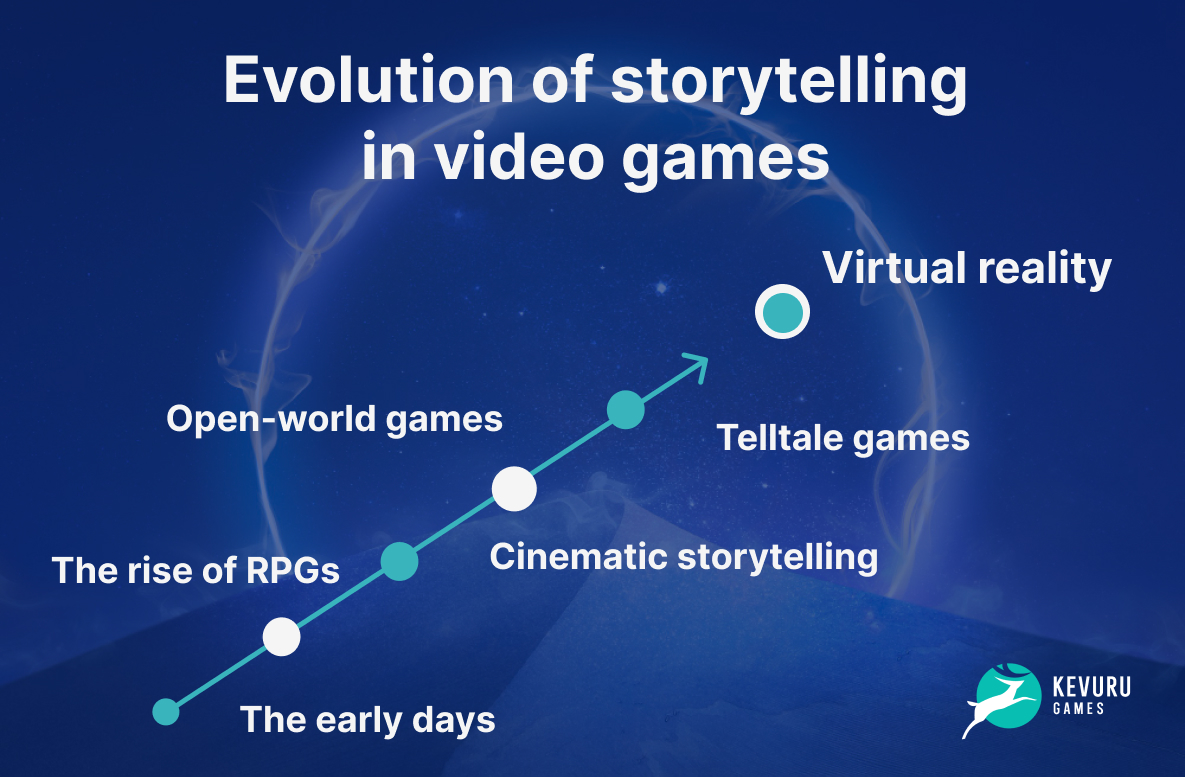The Evolving Landscape of Interactive Storytelling: Choice-Driven Games in 2025
Related Articles: The Evolving Landscape of Interactive Storytelling: Choice-Driven Games in 2025
Introduction
With enthusiasm, let’s navigate through the intriguing topic related to The Evolving Landscape of Interactive Storytelling: Choice-Driven Games in 2025. Let’s weave interesting information and offer fresh perspectives to the readers.
Table of Content
The Evolving Landscape of Interactive Storytelling: Choice-Driven Games in 2025

The year 2025 promises a dramatic shift in the interactive entertainment landscape. Choice-driven games, a genre already experiencing rapid growth, will be at the forefront of this revolution. These games, where players actively shape the narrative through their decisions, are poised to become even more sophisticated, immersive, and impactful, blurring the lines between entertainment and genuine experience.
Beyond the Binary: Branching Narratives and Emergent Gameplay
Gone are the days of simple binary choices, leading to predetermined outcomes. In 2025, choice-driven games will feature intricate, multi-layered narratives, where every decision, no matter how seemingly insignificant, ripples through the game world, affecting character relationships, plot developments, and even the game’s ending. This dynamic, emergent gameplay will foster a sense of agency and ownership, making players feel truly invested in the narrative’s unfolding.
The Rise of the Player-Driven Universe
The concept of "player-driven universe" will be a defining characteristic of choice-driven games in 2025. These games will go beyond linear storytelling, allowing players to create their own unique experiences within a shared world. Through robust character customization, intricate dialogue systems, and dynamic environments, players will be able to forge their own paths, build relationships with other players, and leave their mark on the game’s world.
Beyond the Screen: Embracing Immersive Technologies
The lines between virtual and real life will continue to blur as choice-driven games embrace immersive technologies. Virtual reality (VR) and augmented reality (AR) will allow players to physically inhabit the game world, making their choices feel even more tangible and impactful. Imagine choosing to fight alongside a character in a VR battle, or using AR to interact with game elements in the real world, blurring the boundaries between reality and fiction.
The Power of Choice: Learning, Empathy, and Social Impact
The impact of choice-driven games extends beyond entertainment. These games have the potential to be powerful tools for education, fostering empathy, and promoting social awareness. By presenting players with complex moral dilemmas and allowing them to experience the consequences of their choices, these games can encourage critical thinking, ethical reasoning, and a deeper understanding of the world around them.
The Importance of Accessibility and Inclusivity
The future of choice-driven games lies in accessibility and inclusivity. Developers will focus on creating experiences that cater to diverse players, regardless of their physical abilities, cultural backgrounds, or personal preferences. This will involve incorporating features like customizable difficulty settings, diverse character representation, and sensitivity to diverse cultural perspectives.
Frequently Asked Questions
1. What makes choice-driven games so engaging?
Choice-driven games offer players a sense of agency and control, allowing them to shape the narrative and experience the consequences of their decisions. This creates a more immersive and engaging experience, as players feel truly invested in the story’s outcome.
2. How do choice-driven games differ from traditional RPGs?
While both genres emphasize player agency, choice-driven games prioritize narrative and character development, while traditional RPGs focus on combat, exploration, and character progression. However, the lines between these genres are blurring, with many games incorporating elements of both.
3. Can choice-driven games be used for educational purposes?
Yes, choice-driven games can be powerful educational tools. By presenting players with complex moral dilemmas and allowing them to experience the consequences of their choices, these games can encourage critical thinking, ethical reasoning, and a deeper understanding of the world around them.
4. How will immersive technologies affect the future of choice-driven games?
Immersive technologies like VR and AR will allow players to physically inhabit the game world, making their choices feel even more tangible and impactful. This will further blur the lines between virtual and real life, creating a more immersive and engaging experience.
5. What are the ethical considerations surrounding choice-driven games?
As choice-driven games become more sophisticated, it is important to consider the ethical implications of their content. Developers must be mindful of the potential impact of their games on players, ensuring that they are responsible and sensitive to diverse perspectives.
Tips for Developers
1. Prioritize narrative depth and complexity.
Focus on creating intricate, multi-layered narratives that respond to player choices in meaningful ways.
2. Design for player agency and immersion.
Give players a sense of ownership over their experience by allowing them to make meaningful choices that impact the narrative and gameplay.
3. Embrace immersive technologies.
Utilize VR and AR to create more engaging and immersive experiences, blurring the lines between virtual and real life.
4. Foster accessibility and inclusivity.
Ensure your game is accessible to all players, regardless of their physical abilities, cultural backgrounds, or personal preferences.
5. Be mindful of ethical considerations.
Ensure your game content is responsible and sensitive to diverse perspectives.
Conclusion
Choice-driven games are poised to become a dominant force in the interactive entertainment landscape. Their ability to offer engaging narratives, immersive experiences, and a sense of player agency promises to revolutionize the way we experience stories. As technology continues to advance, the lines between entertainment and genuine experience will continue to blur, making choice-driven games not only a source of entertainment but also a powerful tool for learning, empathy, and social impact.

![[Top 10] Best Interactive Story Games For Android GAMERS DECIDE](https://www.gamersdecide.com/sites/default/files/authors/u156635/perfect_match2c_book_2.jpg)






Closure
Thus, we hope this article has provided valuable insights into The Evolving Landscape of Interactive Storytelling: Choice-Driven Games in 2025. We appreciate your attention to our article. See you in our next article!